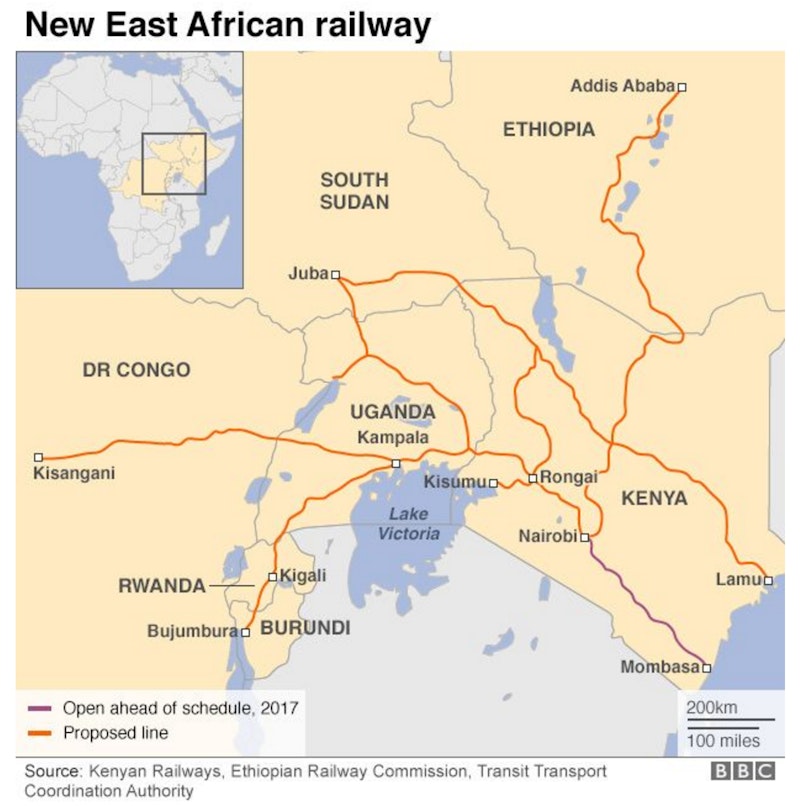In the News
Development through infrastructure - the new Kenyan railway
8th June 2017
Here is an article from the BBC website which, with the A level macro and synoptic exams just days away, gives a fantastic example of a project designed to boost prospects for economic growth in an economy, and the risks to the economy associated with such a project. "Will Kenya get value for money from its new railway?" is the question posed about this supply-side development project.

There is no doubt that, in common with many (most?) African countries, Kenya is in desperate need of new infrastructure. Not only would better transport infrastructure allow for quicker, cheaper and safer transport of goods between the capital in Nairobi and the port at Mombasa, but also it should provide the same benefits for movement of people (mobility of labour) and development of business opportunities in both those cities and also in the undeveloped areas along the route. It should help to drive inward FDI for Kenya. It has created jobs in construction of the railway, and should create jobs as those business opportunities are realised - and the growth of GDP that comes from that should help to lift individuals out of poverty, and provide government with greater revenue to spend on health and education throughout Kenya, thus bringing a boost to development.
However, 80% of the funding for the railway has come from China in the form of loans to the government, which amounted to 6% of Kenya's annual GDP and creates a burden of repayments for the future. This should not be a problem if the railway generates plenty of extra income for the country - Transport Minister James Macharia has said the Kenyan government expects the new line to boost GDP by 1.5%, allowing the Chinese loans to be paid back "in about four years". But there is plenty of evidence that this may be in doubt. On the old railway, only about 5% of the goods transported between Nairobi and Mombasa are transported by train. A study by the World Bank in 2013 found that investment in a standard gauge railway appeared "only to be justified if the new infrastructure could attract additional rail freight in the order of 20-55 million tonnes per year". But as the same study predicted that freight traffic on the entire East Africa Community rail network would grow to approximately 14.4 million tonnes per year by 2030, the railway would need to win all of the freight currently trucked to and from Mombasa - and more. Further, according to the Kenya Ports Authority, Mombasa port handled a total of just over 26 million tonnes of cargo in 2015, so pretty much all of that cargo would need to be transported from Mombasa by train to make the railway worth while.
Further government intervention may be needed to ensure that the multiplier benefits are felt from this supply-side project; the report says that it is possible that a law will be passed requiring certain goods to be transported by rail to ensure a massive transfer of freight away from the roads. They may be forced to do something to justify the cost; building the line, which transits difficult terrain requiring many bridges and tunnels, cost four times the original estimate, and three times more than the international average cost. Cost benefit analysis will have identified many positive externalities from the railway, ranging from fewer deaths on the poor roads to business development opportunities along the route, but for those benefits to come to fruition, the government has to avoid being crippled by debt.
You might also like
Foreign Direct Investment in Africa
Study Notes
Debt Relief for Poorer Countries - Revision Presentation
Teaching PowerPoints

Sustainable Development for Humanity's Future
12th August 2015
Externalities: Air pollution is the new tobacco
21st December 2018
Natural Capital: The Wealth of a Wetland
15th June 2019

Economic Development - Why is Africa Poor?
3rd March 2023
